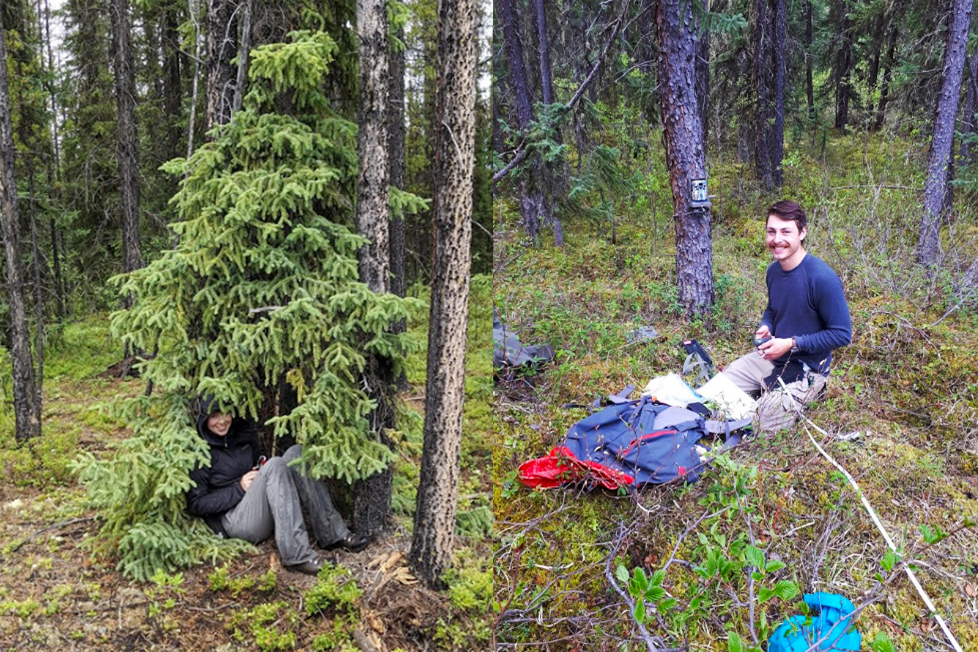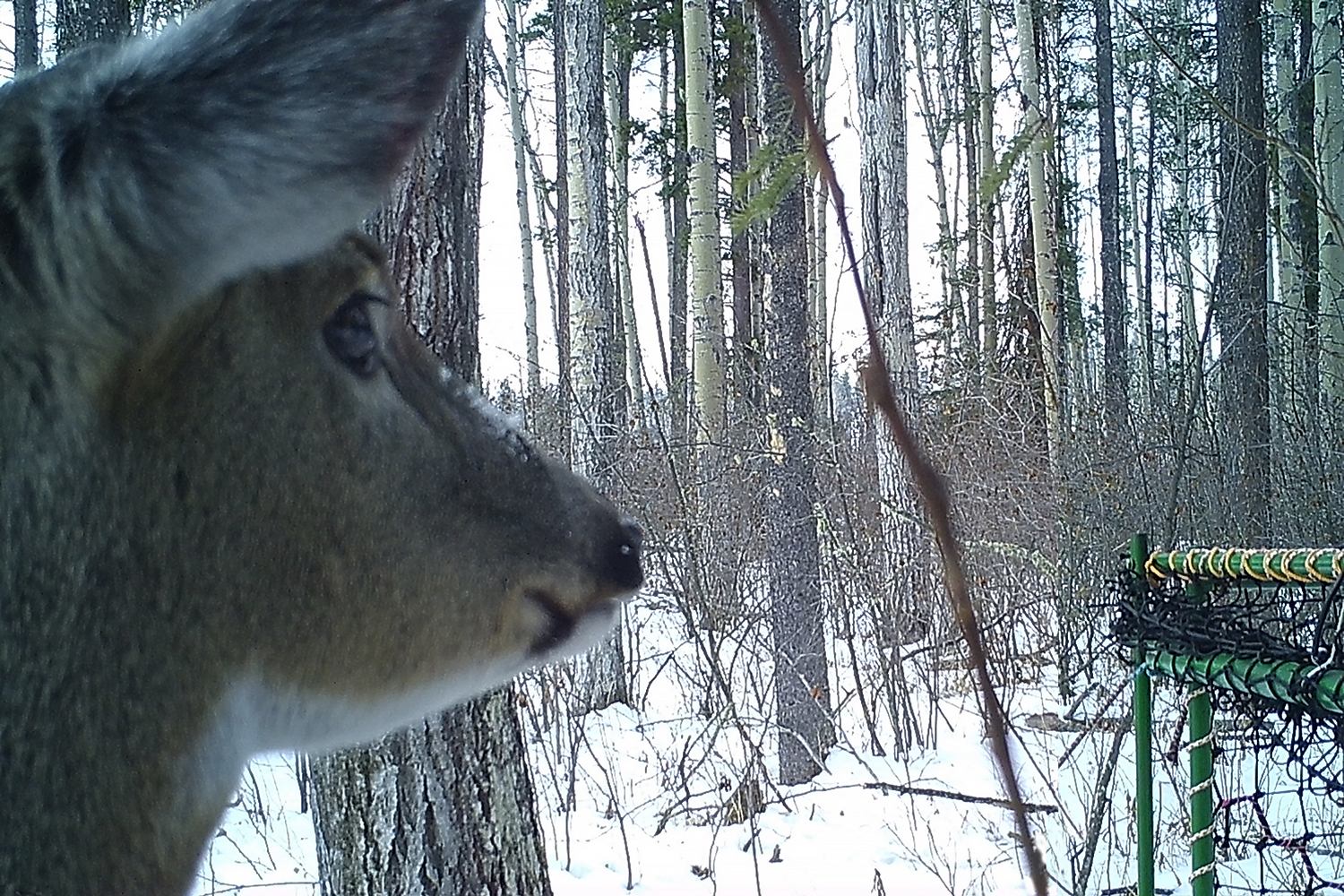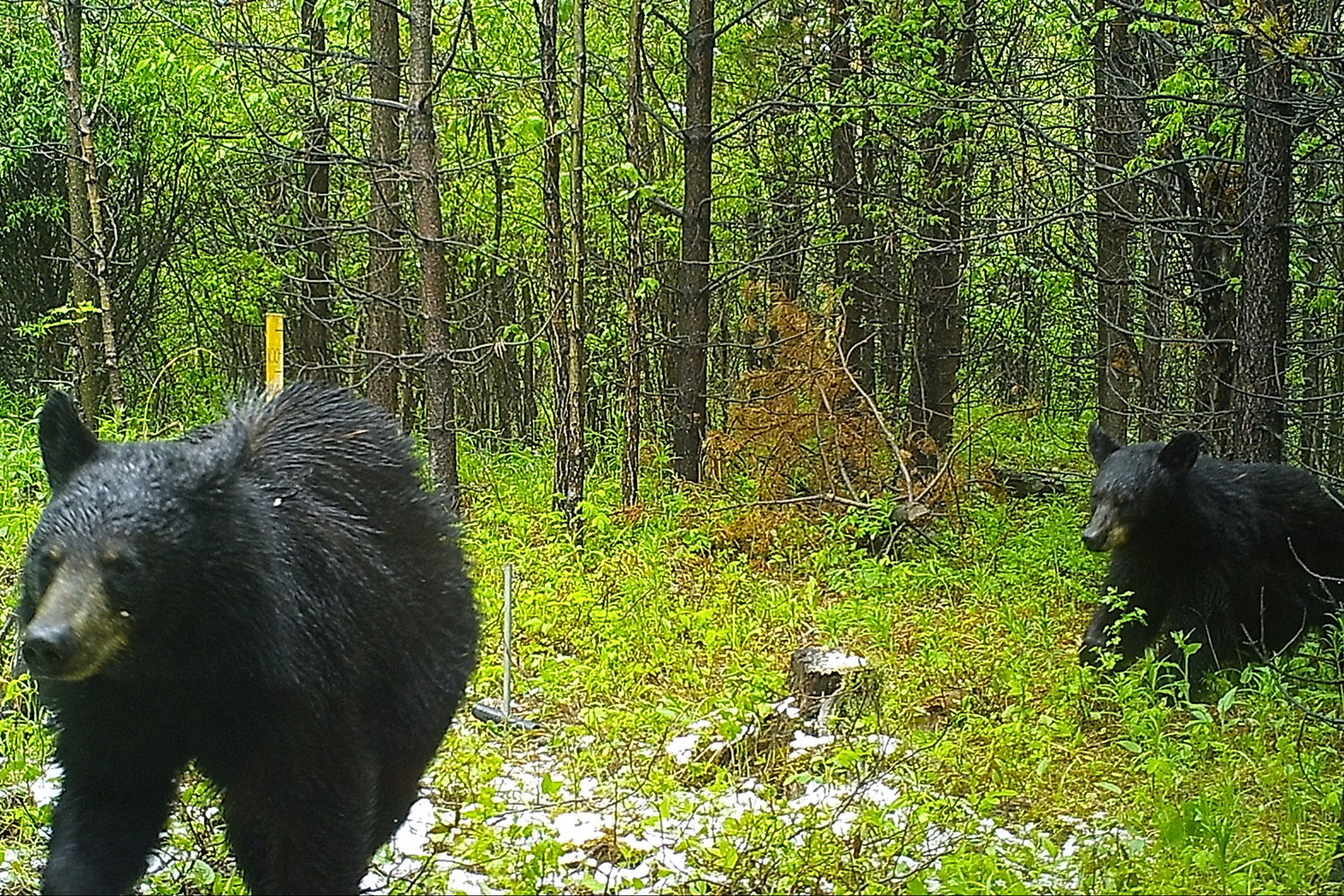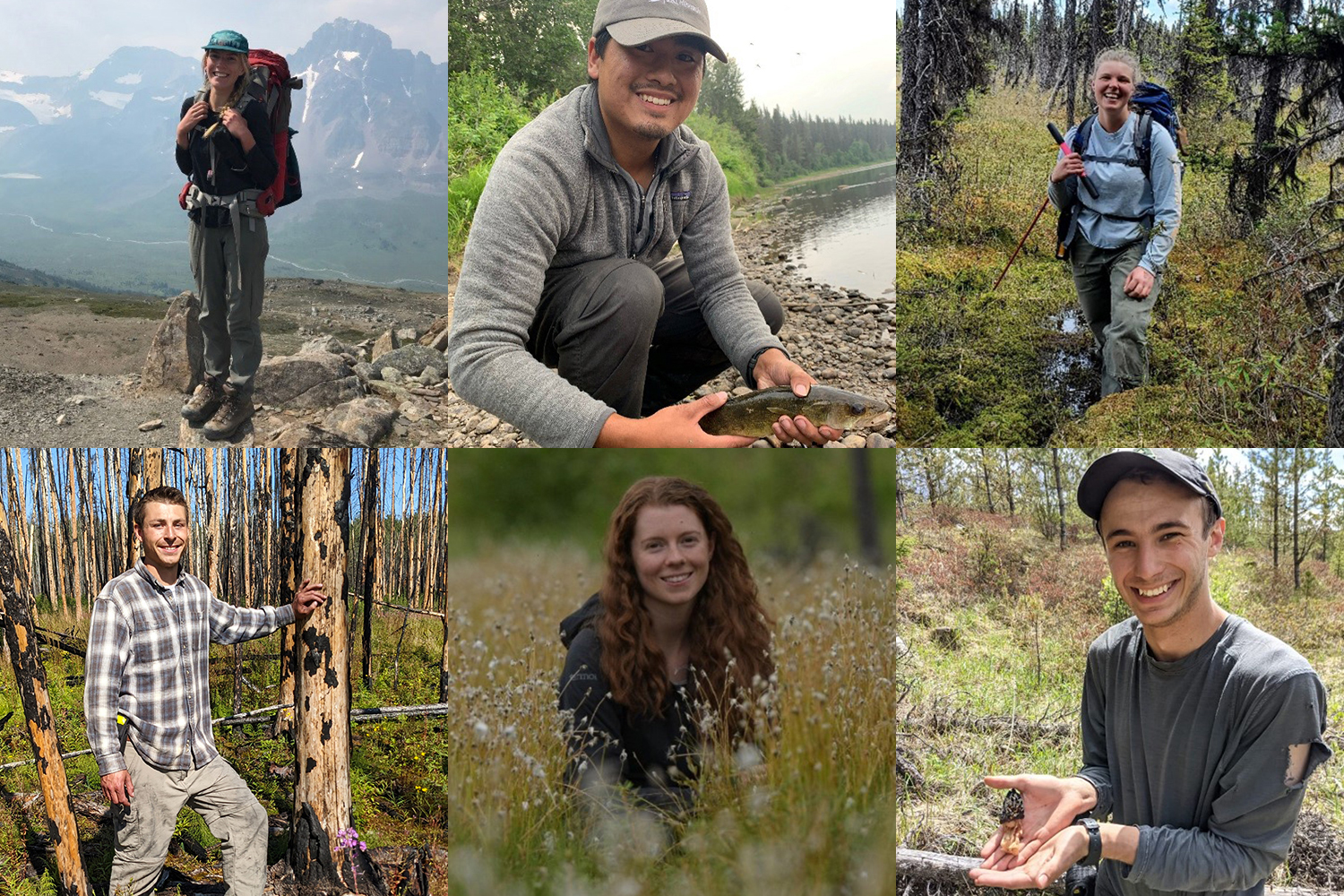
By Solène Williams and Isaiah Huska
In the early spring of 2019, after becoming accustomed to the vast expanses of agricultural fields and grasslands driving through Manitoba and Saskatchewan, our eyes became fixed on the long-awaited mountains of Jasper National Park from our new home of Hinton, Alberta. We had left our respective Ontario homes three days earlier, after nervously stuffing our cars with field and camping gear, fishing equipment, and whatever else we might need for the coming months in the Rocky Mountains.

We were about to begin what would become an 8-month long journey spanning two summers working on a research project for the provincially threatened woodland caribou – a dream job by both our accounts.
The project involved venturing into the wild and industrial western foothills of Alberta to construct wildlife camera traps and vegetation assessment sites within regenerating logging cutblocks during the spring and summer. These sites all fall within the current ranges of the Narraway, Red Rock-Prairie Creek, Little Smoky, and A La Peche caribou herds.

Caribou, who elude predators and human disturbance in un-fragmented old growth forests, had used these areas prior to logging. Harvesting has converted these areas to prime habitat for moose, elk, mule deer, and whitetail deer, and on their tails are the wolves, mountain lions, grizzly bears and black bears who rely on them as a food source. These predators traditionally make ends meat (so-to-say) hunting these ungulates, but won’t turn their noses at an incidental caribou entrée.

The photographs from the traps can be used to show how many and what species of mammals are using the various cutblocks as habitat. By analyzing the vegetation which attracts these grazers, we will be able to understand how different logging practices affect the regenerating plant communities and how these are influencing the prey and predator species within caribou ranges. These data can then be used to inform forestry companies on management strategies that could deter competing species from areas where the sensitive caribou are found.
After just a few short weeks of training, we were ready to set off into the field on our own, sometimes traveling as far as 500 km from the office. This meant navigating through busy logging roads using oil and gas maps and hopping on the truck radio. From dealing with stubborn horses sleeping on the road to listening to the truckers’ banter, there is rarely a dull moment in that world. Our remote field sites also required driving on rough, muddy, and sometimes impassable back-roads.


There’s a reason why caribou are referred to as “the ghosts of the boreal forest”. Apart from looking down at a Canadian quarter, they are usually very rare to see. Although we were seriously itching to see our study species, we knew the odds were against us and we likely would not get the chance. But on one hot June day, as we drove by a natural gas well, we spotted a young lone male caribou walking around on the cracking mud. We settled down our excitement, quickly parked the truck a safe distance from the animal and observed it trotting along a young cutblock, stopping periodically to look around and sniff the ground.

There were a couple moments during our field season where we felt unbelievable luck was on our side, and this was certainly one of them. Evidently, these roads, though treacherous in the rain, proved to be a great method for spotting wildlife! In fact, our field work allowed us to see over 110 black bears, 40–50 grizzly bears, and many other species including a handful of woodland caribou.

Another one of our favorite wildlife encounters happened in the last hours of daylight on a July evening as we were driving back to camp after an especially long field day. As we crested a hill, a massive grizzly came out of the bushes and bolted across the road 15 meters in front of our vehicle. Upon reaching the opposite ditch, it stood up a few times to investigate us before sauntering back into the woods. We sat there awe-struck for a moment before noticing a small greyish figure under a tree next to our vehicle… we weren’t the only ones surprised by the grizzly’s dash across the road. A lynx sat next to us, petrified to even blink an eye. After a few quick photos and with the bear now out of sight, the cat took the opportunity to slink in the opposite direction.

The rough roads we encountered meant the occasional trip to the mechanic over the field season and led us to affectionately dub our work trucks “The Boat” and “The Meat Grinder”. Nevertheless, they always got us to where we needed to go. Once they brought us as close to our destination as possible, it was time to tackle the rest on foot by following our GPS coordinates. Bushwacking and working outside can be a bit of a challenge with heavy rain, bugs, thick vegetation, rapidly changing weather, and large predators nearby, but it also allowed us to walk through quiet old growth forests, accumulate an impressive collection of shed antlers and find rich berry patches to bake pies with in the evenings.


Initially, we were in charge of setting up the trail cameras in various kinds of cutblocks – a time consuming task encompassing the first summer of the project. Some cutblocks were planted with rows of lodgepole pine, others were left to regenerate on their own. Some were freshly logged and some were 50 years old. The camera sites required a 10×5 meter area to be cleared of all vegetation using a mix of landscaping tools, as well as more unconventional methods such as using a conduit pipe to whack at the dense plants, which proved to be very effective!

Cameras were carefully mounted on T-posts driven deep into the soil or large trees and were positioned facing the center of the clearing, where the last task awaited us: applying a generous glob of stinky trapper’s lure in front of the camera in the hopes of capturing some good wildlife photo data. Let’s just say you wouldn’t want to get any of it on your skin, or worse, any fabric. Setting up cameras was a repetitive task, but one we were quickly able to perfect and we enjoyed the design elements involved.

Once all cameras were set up, it was time to look at the vegetation make-up around each of our camera sites. This was the second and final summer of the project and involved learning about all the different types of trees, shrubs, vascular, and non-vascular plants (like lichens, an important food source for caribou). This task came with an abundance of its own challenges, some foreseen, such as debating over what species of lichen or moss are developing based on almost microscopic details.

Others were far more unseen, such as the emergence of COVID-19 threatening the cancellation of the entire summer’s field work for 2020. Fortunately for us, after a large swab up the nose, a two week quarantine upon arrival, and by working as a “pod”, keeping almost no contact with others for the whole season, we made it happen. Arguably, picking weeds for hours can be considered a more frustrating task compared to wearing a mask: each site involved the meticulous removal and collection of 3 square meters of vegetation to later be dried and weighed, giving us an idea of the biomass in that area.

81 vegetation plots and 66 camera setups later, our field work was now finished. Every moment from those last eight months are treasured memories – from seeing the beauty and diversity of Alberta’s remote forests and all the creatures that crossed our paths, to the difficult and demanding field days. It was a great adventure full of excitement, new experiences and challenges to work through that helped us both grow in many ways. Nowadays, we spend more time back in civilization working through classifying the thousands of wildlife pictures captured from all of our sites. Getting to watch who’s been coming around our little spot in the woods is yet another exciting part of this experience! Although we do miss the simpler, unplugged life of field work, it’s inevitable that our next adventure awaits us in no time.











